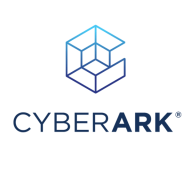

CyberArk Endpoint Privilege Manager and Microsoft Defender for Endpoint both compete in the domain of endpoint security, focusing on access control and threat management. CyberArk holds an advantage in privilege management due to its robust features, whereas Microsoft Defender is superior in offering comprehensive endpoint protection and integration within the Microsoft ecosystem.
Features: CyberArk Endpoint Privilege Manager is notable for its privilege management, password security, and seamless integration with systems like AD and SIEM. Microsoft Defender for Endpoint excels with its advanced threat intelligence, strong malware protection, and integration across Microsoft products, enhancing overall security capabilities.
Room for Improvement: CyberArk users seek better technical support response times, reduced integration complexities with Linux, and simpler customization options. Microsoft Defender users require a more user-friendly interface, improved dashboard integration, and fewer false positives. Enhancing threat intelligence and reporting capabilities are also desired.
Ease of Deployment and Customer Service: CyberArk can be complex to deploy, particularly in on-premises environments, and requires certified professionals for effective support. Microsoft Defender offers easier deployment with hybrid and cloud options and benefits from integration with the Microsoft support ecosystem, though some inefficiencies are noted.
Pricing and ROI: CyberArk is known for being expensive, justified by its extensive security features, and is ideal for large enterprises. In contrast, Microsoft Defender is often included with Windows licenses, making it a cost-effective option within Microsoft suites, offering a better ROI through seamless integration and broad capabilities.
Deploying CyberArk Endpoint Privilege Manager has secured the infrastructure, which saves money, time, and resources.
I consider CyberArk Endpoint Privilege Manager's return on investment to be good since it effectively accomplishes the goals expected from privilege access management solutions.
Without detection and protection measures, organizations would face substantial payments and reputational damage, including the necessity to inform customers about data breaches, potentially leading to loss of business.
We have seen a return on investment when using Microsoft Defender for Endpoint, as it saves labor by reducing the need for staff to focus on it.
The biggest return on investment for me when using Microsoft Defender for Endpoint is the time saving.
They respond immediately to our inquiries, resolve issues promptly, and provide valuable guidance, especially in critical situations.
We engage them when needed and receive prompt responses that typically resolve our issues.
Earlier, we received support for normal tickets within a day, but now it takes one or two days to resolve issues.
The level-one support seems disconnected from subject matter experts.
I rate Microsoft support 10 out of 10.
Due to our size, we don't have access to direct technical support, but the knowledge base, Microsoft Learn, and the articles available are really good.
We can set permissions per team or department, allowing some teams to elevate specific applications while others have different permissions.
CyberArk Endpoint Privilege Manager is quite scalable.
The available reports and other security tools assist in scaling it according to my organization's needs.
We managed to scale it out in a short amount of time, with two months of planning and three months of implementation on 10,000 computers.
Microsoft Defender for Endpoint is scalable enough to handle various devices across environments, whether they are laptops, Android devices, or operating in hybrid environments.
Compatibility is its main feature.
It is a robust solution that has effectively supported our environment without major issues.
Since implementing it, we have not experienced any outages or stability issues.
CyberArk Endpoint Privilege Manager offers multiple options for creating and stopping policies.
I haven't seen any outages with Microsoft.
I rate Defender 10 out of 10 for stability.
Defender for Endpoint is extremely stable.
CyberArk Endpoint Privilege Manager could be improved by simplifying the administration process, specifically when setting up policies and applications.
Currently, no user-based policy option is available inside the EPM console.
Some features provided in the self-hosted version of EPM are not supported in the software as a service version, like connection to some analysis applied by Palo Alto.
Repeated interactions are necessary due to Level One's lack of tools and knowledge, hindering efficient problem-solving and negatively impacting our experience with Microsoft support.
In contrast, competing products offer reduced pricing for long-term commitments, which makes it difficult for us in that environment.
We use Microsoft partners to help govern the platform, and as part of an alliance, we want to gather data from each tenant and combine them for a complete view.
CyberArk Endpoint Privilege Manager is slightly expensive, but costs can be negotiated to become more competitive.
CyberArk Endpoint Privilege Manager is costly compared to other solutions.
I've received feedback that the pricing is high, however, for me, the value it brings is worth the cost.
Given our extensive Microsoft licensing, transitioning to Defender for Endpoint did not affect licensing costs.
It costs $15 per VM for the P2 plan, which is seen as affordable for customers.
The pricing, setup, and licensing were very easy and simple.
CyberArk Endpoint Privilege Manager effectively reduces malicious content in applications by allowing us to identify and block dangerous applications.
It allows them to granularly manage controls to prevent some malicious activities on the endpoint machine.
CyberArk Endpoint Privilege Manager enhances computer security by providing minimal access, effectively preventing ransomware attacks.
Defender for Endpoint's coverage across different platforms in our environment is pretty good. We have devices running Linux, Mac OS, Windows, iOS, and Android. It covers all of them.
Microsoft Defender for Endpoint provides a unified management interface allowing customers to manage their on-premises and hybrid infrastructures from a single pane.
One of the best features of Microsoft Defender for Endpoint is its database for identifying zero-day attacks or malware attacks.
| Product | Market Share (%) |
|---|---|
| Microsoft Defender for Endpoint | 12.2% |
| CyberArk Endpoint Privilege Manager | 1.3% |
| Other | 86.5% |


| Company Size | Count |
|---|---|
| Small Business | 17 |
| Midsize Enterprise | 9 |
| Large Enterprise | 18 |
| Company Size | Count |
|---|---|
| Small Business | 79 |
| Midsize Enterprise | 34 |
| Large Enterprise | 87 |
CyberArk Endpoint Privilege Manager, a critical and foundational endpoint control addresses the underlying weaknesses of endpoint defenses against a privileged attacker and helps enterprises defend against these attacks through removing local admin rights, enforcing least privilege, and implementing foundational endpoint security controls across all Windows, macOS and Linux endpoints from hybrid to cloud environments.
Click here for a free 30 day trial: CyberArk Endpoint Privilege Manager free trial
Microsoft Defender for Endpoint is a comprehensive security solution that provides advanced threat protection for organizations. It offers real-time protection against various types of cyber threats, including malware, viruses, ransomware, and phishing attacks.
With its powerful machine-learning capabilities, it can detect and block sophisticated attacks before they can cause any harm. The solution also includes endpoint detection and response (EDR) capabilities, allowing organizations to quickly investigate and respond to security incidents. It provides detailed insights into the attack timeline, enabling security teams to understand the scope and impact of an incident.
Microsoft Defender for Endpoint also offers proactive threat hunting, allowing organizations to proactively search for and identify potential threats within their network. It integrates seamlessly with other Microsoft security solutions, such as Microsoft Defender XDR, to provide a unified and holistic security approach. With its centralized management console, organizations can easily deploy, configure, and monitor the security solution across their entire network.
Microsoft Defender for Endpoint is a robust and scalable security solution that helps organizations protect their endpoints and data from evolving cyber threats.
We monitor all Anti-Malware Tools reviews to prevent fraudulent reviews and keep review quality high. We do not post reviews by company employees or direct competitors. We validate each review for authenticity via cross-reference with LinkedIn, and personal follow-up with the reviewer when necessary.